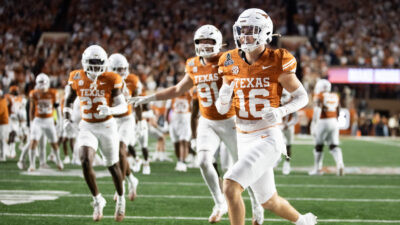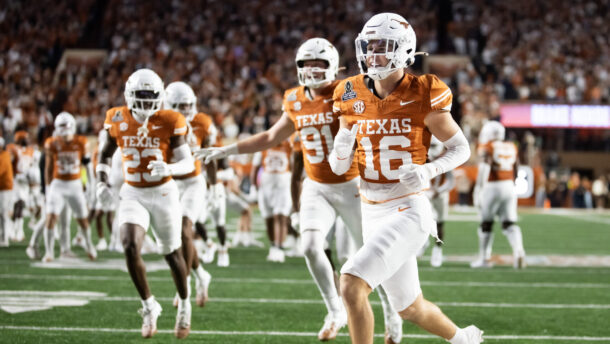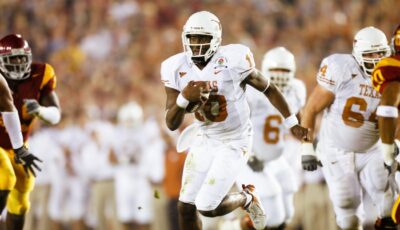Helmet cameras and in-game sideline communication systems not limited to tablets and computers could be instituted as early 2016 with a plan for beta-testing during bowl season this fall, the NCAA said Wednesday.
The NFL has used similar technology to communicate plays before the snap inside of quarterback helmets for two decades, but it hasn’t yet reached college football. Enhancements for players, coaches and the viewers at home led discussion in what amounts to the NCAA’s attempt to catch up to technology.
“The committee wants to incorporate the modern forms of technology and innovation that will advance the quality of instruction for the game,” said Troy Calhoun, chair of the committee. “We would like to encourage some controlled experimentation to further our broader discussion within our membership.”
Calhoun, also Air Force’s head football coach, told CBS Sports’ Jon Solomon that trial and error will be involved before the NCAA’s experiments are turned into rules in 2016.
“Any time you head down a different avenue, we’re gong to find things that need to be addressed, yet we’re also going to find an awful lot of positives, too.”
According to the NCAA, other rules proposals supported by the committee include:
• Allowing an eight-person officiating system to be utilized. A center judge was used experimentally in several conferences during the past two seasons. The benefits of having the extra official included getting the ball spotted more efficiently and detecting holding and hands-to-the-face penalties.
• The ineligible downfield rule was adjusted from three yards to one yard past the line of scrimmage. To be legal, a lineman who is more than one yard past the line of scrimmage must be engaged with a defensive player when a pass is released.
• A 15-yard unsportsmanlike foul will be called on players who push or pull opponents off piles – for example, following fumbles.
• If a helmet comes off a defensive player in the final minute of a half, there will be a 10-second runoff of the game clock and the play clock will be set at 40 seconds. Previously, the play clock was set to 25 seconds.
• Officials will return to giving teams an initial sideline warning when their personnel move out of the designated team bench area.
• Officials are to treat illegal equipment issues – such as jerseys tucked under the shoulder pads and writing on eye black – by making the player leave the field for one play. The player may remain in the game if his team takes a timeout to correct the equipment.
• Allow instant replay review to see if a kicking team player blocked the receiving team before the ball goes 10 yards on onside-kick plays.
• Teams must be provided at least 22 minutes prior to kickoff for pregame warm-ups. Teams may mutually agree to shorten this time period.
• The calling of team timeouts by the head coach will be instant-replay reviewable at any time.
• If the play clock runs to 25 seconds before the ball is ready for play, officials will reset the clock to 40 seconds. Previously, the play clock would be reset when it reached 20 seconds.
• Based on research findings of the National Football League, non-standard/overbuilt facemasks will be prohibited.
• The committee also discussed length-of-game issues in the sport, meeting with television partners in an effort to find ways to reduce dead time in the game. In the 2014 season, the average game in Football Bowl Subdivision was three hours and 19 minutes.







